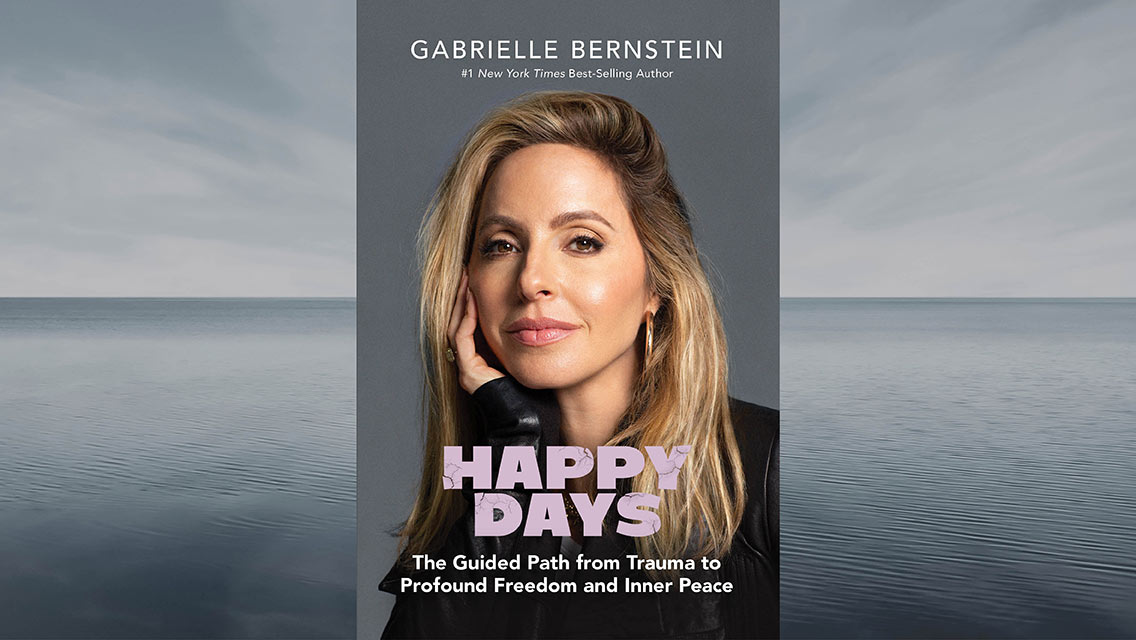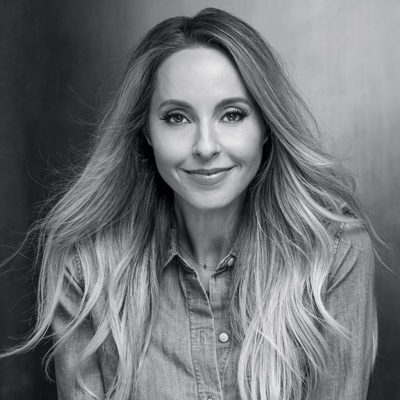It’s May 10, 2019, Mother’s Day. I’m sitting in the back seat of our car next to my four-month-old son as my husband drives us to brunch at my in-laws’ house. I look out the window, holding my breath with tears slowly rolling down my face. I whisper under my breath so my husband won’t hear me, “I want to die.”
I’m suffering and afraid to admit it. For more than a month, I’ve had daily panic attacks, nightly insomnia, agoraphobia, and severe depression. I’ve tried every tool in my spiritual toolbox, praying daily on my knees, therapy sessions, meditation, and every herbal sleep aid that is allowed while breastfeeding. I’m desperate for solutions to a problem that I’m not willing to admit is there.
When we arrive at my in-laws’ house, I sit down at the kitchen table with my sister-in-law Meredith. I burst into tears. My mother-in-law comes over to the table and pats me on the back. “It’s okay, honey, all new moms are anxious,” she says. I know she’s trying to help, and I love her for that, but this anxiety isn’t just a “new mom” thing. For weeks, I have been white-knuckling it through the most difficult time in my life. Months of no sleep. Days filled with tears, breastfeeding, and sheer terror.
One week later, I head to Manhattan with my family because I have a talk the next day. That night I don’t sleep, not even a minute. I move from the sofa to the bed to the loft and back to the sofa. I toss and turn, counting down the hours. The clock is my worst enemy. Around 6, the morning light shines through the window shades. I lie on my living room floor as tears fill my eyes. I am broken.
I roll over, pick up my phone, and send an e-mail to the event coordinator: “I’m so sorry to do this, but I’m really suffering with insomnia and anxiety. I’m not sure what’s going on, but I haven’t slept the entire night. I’ve never done this in over 15 years as a speaker, but I need to cancel my talk.” I press send. Then the shame and guilt set in. I don’t feel relief; I feel like a piece of shit.
Then I text my therapist. This is a daily routine. “Sorry to bother you again so early in the morning. I don’t know what to do anymore. I haven’t slept in weeks, and I canceled my talk this morning. Call me when you can.”
The clock turns 7:30, and my son begins to cry. I go into the bedroom to change his diaper and sit him down to feed. My husband looks at me with sad eyes. He’s traumatized by all I’ve been through and terrified that there is no solution. As I feed my son, I sob and say to my husband, “I canceled the talk. I’m a piece of shit, and I may as well die.”
As I finish nursing Oliver, my phone rings. It’s my therapist. “We need to talk,” she says. “Please get Zach on the phone.” I put the phone on speaker, and we huddle around to hear what she has to say. “Gabby, your tools are no longer working. I believe you are suffering from postpartum depression and anxiety. I am suggesting that you speak to a psychiatrist and get on medication. This is a biochemical condition that you cannot fix on your own.” I’d spent months dreading this diagnosis, but for some reason the moment she said it out loud, I felt relief. I took a breath of acceptance. Sometimes intervention is the only way for us to truly accept what’s really going on.
When I saw a postpartum psychiatrist, she diagnosed me on the spot and put me on a medicated path. Medication was new for me. I was brought up homeopathic. I had never had a prescription filled in my life. But when I walked out of the doctor’s office with the prescription in my hand, I felt immediate relief. I got in a cab and headed right to the pharmacy to pick up my medication. Zach met me. We stood there holding hands with hope in our eyes. When we went to dinner that night, I was the happiest I’d been in months. I hadn’t yet taken even one pill, but just knowing they were there was enough to make me smile.
The most important thing my psychiatrist said was: “Gabby, you’ve done a lot of trauma healing, spiritual practices, and therapeutic work. Now with medication, you will feel safer, which will allow you to go even deeper with your therapy. This will be a blessing for you.”
Later that week I checked in with my friends, acupuncturists, and healers who had been helping me. I admitted to them how severe my condition was and shared my diagnosis: “I’m going on an antidepressant. Don’t worry, it’s a super low dose. Hopefully, I can get off of it soon.” I found myself justifying it because I felt so ashamed that I couldn’t fix this with my spiritual practices or holistic lifestyle. Then I shamed myself for not being over the shame.
The most important thing my psychiatrist said was: “Gabby, you’ve done a lot of trauma healing, spiritual practices, and therapeutic work. Now with medication, you will feel safer, which will allow you to go even deeper with your therapy. This will be a blessing for you.” I held on to her words. I made the commitment to use the medication as a tool to help me fearlessly go deeper into the therapeutic work. I wasn’t going to just take a pill and numb out. I was going to go deep and use my new baseline of safety to transform the memories that I’d been so frightened to face.
Accepting my diagnosis
The following week, I had to lead a workshop for hundreds of people at a spiritual center in Massachusetts. Two of my best friends, Robyn and Jamie, came along. I told them that I needed a babysitter — for myself. I was one week into my psychopharmacology path, but not yet sleeping. (It often takes months to get the right therapeutic dose of the medication.) I needed support from friends I could trust and rely on in case I had insomnia or a panic attack.
The first night of the retreat I excused myself around 9 p.m. to bathe and try to wind down for bed. I clung tightly to a stuffed monkey that I’d taken from my son’s nursery that had become my security at night. As the minutes rolled by, I felt the surge of anxiety spike in my chest. Finally, I grabbed Monkey and ran across the hall to Robyn and Jamie’s room.
“Robyn, you take my room, and I’ll sleep in here with Jamie. I need to feel safe.” Robyn happily moved across to my room. I spent 30 minutes tossing and turning in Jamie’s room before I grabbed Monkey and walked back to my room to get into bed with Robyn. Then I grabbed Monkey one more time and headed back to Jamie’s room again. I looked at my friends with terror in my eyes and said, “Please don’t call me crazy.” Robyn smiled and said, “You’re not crazy. But Monkey didn’t sign up for this!” We all laughed in the midst of the chaos.
I only slept one hour that night. I couldn’t put on a happy face and pretend I was okay the next day. The only way to get through the full-day workshop was to tell the truth. I got on the stage that morning, and my eyes welled up with tears. I told an audience of strangers that I was suffering from postpartum anxiety and depression, that I was newly diagnosed and on medication. I talked about my insomnia and how I hadn’t slept the night before. I even cracked a joke about Monkey. The audience extended love and positive energy my way. I felt held and comforted by these compassionate souls. Telling the truth required a lot of self-compassion. What I experienced that day was a reminder that compassion is the antidote to shame.
A few months later, I was at the right dose of the antidepressant. The panic had subsided, the insomnia was under control, and I was out of the depression. With my new baseline of safety, I was ready to continue facing the truth of the abuse, the shame of neglect, the impermissible rage, and the terror that lived in my body. I became a student of transformational trauma healing therapies. My doctor was right. The medication gave me a new baseline of safety that would allow me to go even deeper with the therapeutic work. I went far with EMDR therapy, which gave me the ability to recover new memories while safely resolving them. Through the practice of Emotional Freedom Techniques (EFT), I was able to regulate my nervous system on my own, which helped me establish a new level of resilience.
When a person has experienced chronic trauma or insecure attachment, the window of tolerance shrinks and the individual has less ability to ebb and flow out of emotional states, becoming overwhelmed and triggered more easily.
I came to understand that the abuse and neglect from my childhood had shrunk my window of tolerance (my nervous system’s ability to ebb and flow in and out of big emotions without getting emotionally flooded). Window of tolerance is a term coined by Dr. Daniel Siegel. With an optimal window of tolerance, we’re able to regulate our nervous system naturally. Even in moments when we’re extremely upset or distraught, our nervous system can get activated and then naturally settle. When a person has experienced chronic trauma or insecure attachment, the window of tolerance shrinks and the individual has less ability to ebb and flow out of emotional states, becoming overwhelmed and triggered more easily.
The medication and deeper therapy, particularly EMDR, helped expand my window of tolerance. For the first time in my life, I was starting to feel safe. In that place of safety, my constant state of sympathetic arousal was transformed to a parasympathetic state in which my nervous system relaxed.
The stigmas that hold us back
Even though I’d begun to feel relief on the medication, I still held on to the shame about it. I felt ashamed to share my postpartum experience with other moms because deep down I felt like a failure. Everyone says having a baby is the best time of your life. For me, it was the scariest. I felt ashamed when I spoke about the medication with my spiritual friends because I hadn’t been able to heal myself through spiritual practices or natural remedies. Some of my contemporaries and fellow authors have stood on stages and written books denouncing antidepressants. This made me think that medication was off limits, especially for a spiritual teacher.
What I was most ashamed of, though, was that for over a decade as a teacher, I too was unwittingly contributing to the stigma. I’d stood on stages and responded to questions about mental illness in ways that no longer resonated. In a kind and compassionate way, I’d say things like, “Here’s a breath practice for anxiety” or “Meditate more and your depression will lift.” While I believe wholeheartedly that meditation is a solution, what I didn’t realize was that these comments were potentially unhelpful to anyone suffering with severe mental health issues. I didn’t understand how trauma affects the brain, or what it was like to have a biochemical condition that required medicated support.
While I believe wholeheartedly that meditation is a solution, what I didn’t realize was that these comments were potentially unhelpful to anyone suffering with severe mental health issues. I didn’t understand how trauma affects the brain, or what it was like to have a biochemical condition that required medicated support.
Years before my own diagnosis, I’d asked two women on my team to write a blog for my website about their anxiety journeys. One of the women included a paragraph about how antidepressants saved her life. After reading it, I felt concerned that it would bring up a debate about medication on the blog, so I asked her to remove it, making the case for keeping a potential controversy out of the blog. At that time I felt justified, but little did I know that I was shaming a team member I cared for and contributing to the stigma.
Thankfully, years later I was able to make amends. On the exact day that I picked up my own medication from the pharmacy I called her to apologize. I told her about what had been going on with me and the relief I felt to be on a medicated path. Luckily, I found a supportive voice on the other side of that call.
A loaded topic
This is not a PSA for antidepressants, but it’s also not a topic to ignore. We live in a culture (especially in America) where drugs are highly overprescribed. I understand the side effects inherent in antidepressants and other psychopharmaceutical medications. But many people who’ve experienced unresolved trauma, depression, postpartum depression, severe anxiety, bipolar disorder, or any other form of anxiety/depression know what a miracle medication can be. In certain cases, it saves lives. Medication when prescribed as part of a larger program of recovery and therapy really can help you get to a safe baseline where you can start to do the deeper work.
Take your mental health seriously, and consciously make decisions based on educated psychiatric guidance. With a proper diagnosis from a qualified physician, trust that you are being guided on a healing path. Do your research, and don’t rush to get medicated without thoughtful communication with your psychiatrist. (If you’re a mother struggling with postpartum depression or someone concerned about a possible mental illness, visit the link on the Resources page of my book for guidance).
Take your mental health seriously, and consciously make decisions based on educated psychiatric guidance.
I share my medication story to take away the stigma. If you had a heart condition, you wouldn’t flinch before taking prescribed blood thinners. When you’re suffering from an acute mental illness, it’s important to seek psychiatric guidance and get support. But it’s a starting point, not the destination. Keep going; the deeper healing happens in therapy, spiritual practice, and your own commitment to reprogramming your emotional and physiological state. Therapeutic healing is what’s required for true freedom, and it’s the key to regulating, reprogramming your brain, and retraining your nervous system.
From a spiritual perspective God is in all healing devices whether it be medication, a doctor, or a therapist. When we are in the pursuit of freedom and are willing to do whatever it takes to get better we will always be guided to the exact healing methods we need. Seeing the medication in this way, recognizing it as part of God’s plan, helped me release the shame and embrace every part of my healing journey.
When I understood what happened to my brain in childhood, as an addict, and post-pregnancy, I had far more acceptance of myself, my experiences, and my inability to be present. I could see clearly how my brain’s inability to take in information, focus, and keep me feeling safe was not my fault. I could see how the programming from my childhood had affected my neural pathways and, therefore, my life. When I began to understand how deprived of serotonin my brain had been because of chronic hypervigilance, I accepted the help of antidepressants for serotonin support. I no longer thought of myself as “crazy.” Instead, I could lovingly accept my underdeveloped brain function and welcome the fact that I was spiritually guided in all ways, including the medicated path.
Rewiring the brain
Thankfully, the brain’s neural pathways and synaptic connections have the ability to change and reorganize. This is known as neuroplasticity. Through therapeutic methods and mindfulness practices, I could rewire my brain. I started noticing that my brain was changing when I was two years postpartum. By that point, I had fully recovered from the postpartum depression and anxiety. I had spent over a year supported by medication, which helped me establish a new baseline of safety and restored my brain’s reserves. Most important, I’d dived into therapeutic practices (like EMDR) for rewiring my brain.
My spiritual practice became stronger too. The more at ease I became in my day-to-day life the more I could access a direct connection to the spiritual realm. I could hear the internal dialogue of Spirit more clearly because I was no longer moving so fast in such a heightened state of fear. In stillness we receive the Universal guidance of love as a clear direction. The more grounded I became the more connected I felt. Spirit was always with me throughout my life but now I felt the presence of love become more integrated. This deeper spiritual connection allowed me to show up at my highest capacity as a teacher, wife, friend, and mother.
This excerpt has been reprinted with permission from Happy Days: The Guided Path from Trauma to Profound Freedom and Inner Peace by Gabrielle Bernstein. Book is available wherever books are sold.





This Post Has 0 Comments